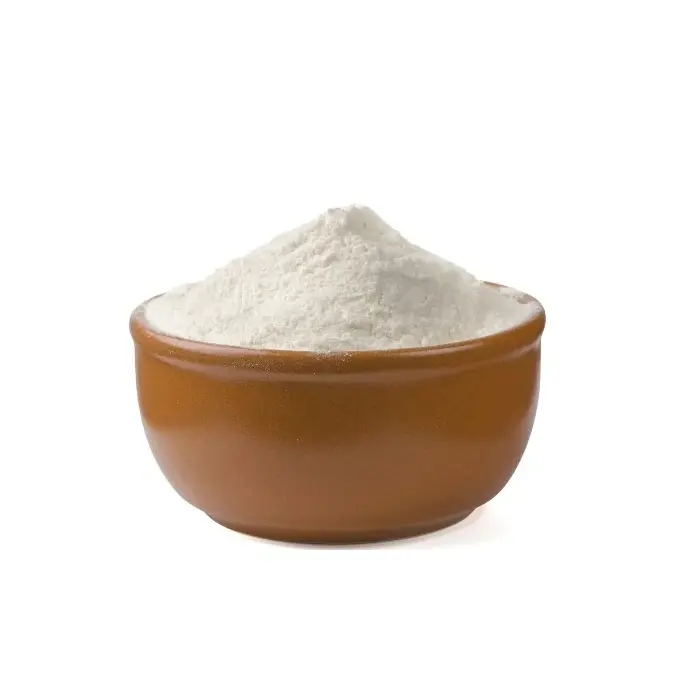Produktionsrohstoffe.
(a) Magnesit ist eine der Hauptquellen für Magnesiumoxid, (MgO)-Gehalt von etwa 47 %, MgCO3 wird nach leichter Kalzinierung (400 ~ 600 ℃) kalziniert und dann zu einem festen Pulver (MgO) gemahlen. Die Quelle ist in Liaoning, Xinjiang, Sichuan, Shandong, Tibet und anderen Provinzen und autonomen Regionen weit verbreitet, mit Reserven von 2,8 Milliarden Tonnen, was 30 % der weltweiten Mineralquellen ausmacht.
(b) Dolomiterz [CaMg(CO3)2] ist auch die Hauptquelle für Magnesiumoxid. Die Vorkommen sind größer und weiter verbreitet. Der MgO-Gehalt beträgt etwa 22 %. Der CaO-Gehalt beträgt etwa 30 %, der Rest 48 %, die theoretische Struktur von MgCO3 und CaO ist eins zu eins. Die Abgrenzungslinie für Dolomit ist, dass ein MgCO3-Gehalt von 25 % oder mehr vorherrschend sein muss, da es sonst nicht als Magnesiumoxid-Erz verwendet werden kann und auch nicht als Dolomit bezeichnet werden kann.
(c) Serpentin [Mg6(Si4O10)(OH)2] ist auch der Rohstoff für die Herstellung von Magnesiumoxid, hauptsächlich wässrigem Magnesiumsilikat (3MgO-2SiO2-2H2O).
(d) Das Schmelzen von leichter Magnesiumlegierungsschlacke ist auch der Rohstoff für die Herstellung von Magnesiumoxid.
Vorbereitungsprozess.
1. Salzlaugen-Kalk-Verfahren: Die zuvor gereinigte und raffinierte Salzlauge und die durch Aufschluss und Entschlackung hergestellte Kalkmilch werden im Fällungstank einer Fällungsreaktion unterzogen, der erhaltenen Aufschlämmung wird ein Flockungsmittel zugesetzt und nach gründlichem Mischen gelangt sie zur Trennung in den Absetztank. Anschließend wird sie gefiltert, gewaschen, getrocknet und zerkleinert, um das fertige Magnesiumoxid herzustellen.
2. Salzlake-Ammoniak-Methode: Sulfat, Kohlendioxid, eine kleine Menge Bor und andere Verunreinigungen werden durch Reinigungsbehandlung der Salzlake als Rohstoff entfernt, Ammoniak wird als Niederschlagsmittel im Reaktionskessel für die Niederschlagsreaktion verwendet, bevor die Reaktion in eine bestimmte Menge Kristallarten umgewandelt wird, und zwar gründliches Rühren. Das Verhältnis von Salzlake zu Ammoniak beträgt 1: (0,9 bis 0,93) und die Temperatur wird auf 40 °C geregelt. Am Ende der Reaktion wurde ein Flockungsmittel hinzugefügt und der Niederschlag wurde gefiltert, gewaschen, getrocknet und zerkleinert, um fertiges Magnesiumoxid herzustellen. Die Testmethode soll die Ausbeute verbessern, den Waschzyklus verkürzen und den Produktionsprozess verbessern und perfektionieren.
3. Rhodochrosit-Salzsäure-Ammoniak-Methode: Magnesit und Anthrazit oder Koks werden in einem vertikalen Ofen kalziniert, um Magnesiumoxid und Kohlendioxid zu erzeugen. Bittererdepulver wird mit Wasser zu einem Brei verarbeitet, nachdem die Reaktion mit der vorgeschriebenen Salzsäurekonzentration stattgefunden hat, um eine Magnesiumchloridlösung herzustellen. Die Magnesiumchloridlösung reagiert mit einer bestimmten Ammoniakkonzentration im Reaktor, und die Produkte werden gewaschen, abgesetzt, gefiltert und getrennt, getrocknet und zerkleinert, um Magnesiumoxidprodukte zu erhalten. Je nach Bedarf kann ein Oberflächenbehandlungsmittel zur Oberflächenbehandlung hinzugefügt werden.
4. Mikrokristallines Magnesiumoxid wird bei Raumtemperatur aus einer gesättigten MgCl2-6H2O-Lösung hergestellt und bei 70 °C unter Rühren in überschüssiges konzentriertes Ammoniak gegeben, woraufhin sich das Magnesiumoxid langsam absetzt. Hinweis 1: Das verwendete destillierte Wasser und Ammoniak dürfen kein CO2 enthalten, destilliertes Wasser muss vollständig abgekocht sein und das CO2 in NH3 muss mit KOH entfernt werden. Gerät zur Herstellung von Magnesiumoxid Hinweis 2: Das Reaktionsgefäß muss aus Hartglas bestehen, um eine Reaktion zwischen Mg(OH)2 und Kieselsäure zu vermeiden. Der erhaltene Niederschlag wird zwei Tage in der Mutterlauge belassen und während dieser Zeit mehrmals auf 70 °C erhitzt. Anschließend wird der Niederschlag dekantiert und gewaschen. Er wird dann in einen mit Paraffin beschichteten Nickelbecher gegeben und durch Zentrifugieren mit CO2-freiem destilliertem Wasser gewaschen. In der Vorrichtung können Fällungs- und Dekantierungsvorgänge durchgeführt werden, wobei das erhaltene Magnesiumoxid zunächst durch Vakuumtrocknung von Kaliumoxid und anschließend durch Vakuumtrocknung von Phosphorpentoxid gewonnen wird.
5. Großes Magnesiumoxid. 243 ml Wasser in einen Platinbehälter mit breiter Öffnung geben, dann 1375 g KOH und 485 g MgCl2-6H2O hinzufügen, auf einem Elektroofen auf 210 °C erhitzen und nach etwa einer halben Stunde klären. Dann langsam innerhalb von 18 Stunden auf Raumtemperatur abkühlen lassen, d. h., es fielen Kristalle mit einem Durchmesser von etwa 0,2 ml aus, 2 Stunden bei 100 °C getrocknet, d. h. große Magnesiumoxidkristalle.

